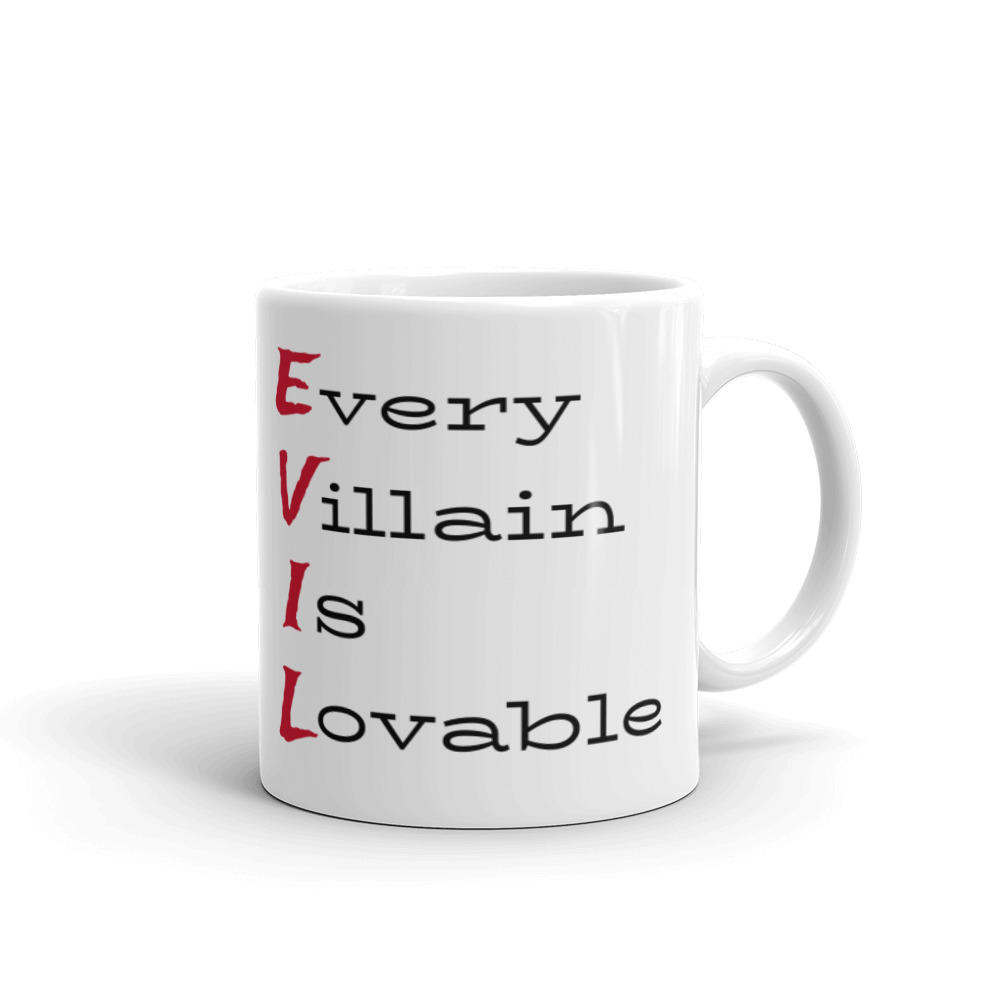
Lovable Villains
Everyone has that one villain they love or love to hate. Loki comes to mind as one of the top lovable villains, but what makes a villain lovable? Let’s take a look.
What is a Villain?
In order to define a villain, we should look at first a dictionary for some clarification:

a character’s whose evil actions or motives are important to the plot
dictionary.com
Let’s also take a look at some other characters to get a good idea of where the villain falls into the group dynamic.
The protagonist is the main character of the story. The story is told through this character’s viewpoint in most cases. They are the center of conflict when it arises, drive the plot with their actions and they are typically in most scenes of the story.
The hero is the good guy, whether the protagonist or another character, they fight for what they believe in, usually a just cause.
The antagonist is the character or object that gets in the hero’s way of achieving their goals. This could be another character, their own thoughts, or an outside force.
Now, finally, the villain. The villain, as mentioned above, is the character whose action and motivations are performed in selfish and even dangerous ways.
What Makes a Good Villain
There have been plenty of villains that didn’t hit the mark, so how do you create a good one that readers are going to love?
Human Villains
Well, the first place to start is to define your goals for the character. What goals are they trying to achieve throughout the book. Their goals and the goals you have for them are going to be the backbone of your character. Of course you’ll have to dig a little deeper into the why, but if you want to create a villain your readers will love, it’s essential to know their goals and why they are trying to reach those goals.
Next, you want to create interest in your villain. Here you need to flesh them out completely. What are their quirks, their likes and dislikes, their job (do they like their job, or does it add another layer of frustration to their personality?) Describe them. Do they have any distinguishing features that would create pause or perhaps something they have to disguise so as not to reveal themselves to the hero? Do they have a family? Is their vendetta against the hero something they hide from their family? Be as detailed as possible, giving as much background as you can, even if some items don’t make it into the story. You will know all there is to know about your villain and that will help you create a lovable one.
Find their backstory, their goals and motives behind what they are doing. Every villain has a reason behind what they are doing and that reason has to cause them to do unjust act against your hero. Their actions must be justifiable to the villain in relation to their goal and motives.
Next, Identify what emotion you want the character and/or their actions to invoke. What do you want the readers to feel when they read that the villain is in the scene or the actions that they are performing. This emotion will create a deeper connection to the character as the story moves forward.
In Human Villains

Some stories don’t have a human villain; some will have in-human ones, whether that is some sort of creature, a powerful entity, or natural disaster. This gives another angle to your story that the hero must defeat.
This could also be your hero’s subconscious. Doubts, fears, anger, hurt, whatever internal struggle the hero may be facing. This invisible villain will to bring another angel of villainy to your story.
Creating Believable Characters

Every Day Lives
As you flesh out your villain, remember that they are a normal person, hence the job and possibly a family. They may also have their own routines in the morning and evening that they do. Their complete focus may not always be on the hero if they’re life is as a normal person going through each day.
Motives
Your villain has something that is motivating them to do what they are doing to the hero. That motivation is important to the villains structure, it drive the villain to move toward their goal. What is it that your villain wants, why do they want it and what are they willing to get it?
Backstory
Your villain’s backstory is important for the creation of your character. Their past is often what justifies their motives and goals against the hero. Giving your readers a glimpse to their past gives insight as to why they do what they do. Make sure their past is something that will, to them, justify their actions in the present. If they have a normal family backstory, your readers will wonder why they begrudge the hero as they do.
Villain-Hero Match
Neither character should overpower the other until the final battle. The actions of each should be a push and pull effect. Both characters actions should progress the story, but never leave the reader wondering why one couldn’t squash the other because they are portrayed to be stronger and/or smarter than the other during the entire book.
You want them to match in a way that their wits and actions create an evenly matched tug of war between the two until they reach the final battle where one will finally win over the other.
Weakness
Every character has a weakness and the hero is not exception. This weakness is something the villain is very aware of and exploit to the fullest extent to progress their goals.
More Items to Consider
There are so many things to consider when creating lovable villains.
- Make your villain good-looking. Will your readers love them because of their description?
- Give them a pleasant personality. Will your readers love them because they have a winning personality?
- Consider their flaws. All characters have flaws, what flaws does your villain have and how can they impact the story?
- Use the villain to help your hero. Your villain is an opportunity for the hero to change, to rethink their path, to become better as a person.
- A fun-loving villain. Villains that have fun within the story create fun within the story for the reader.
- Villains internal struggle. As with the hero, your villain should also have struggles within their own mind to contend with.
- Find their sympathetic side. Do you want your reader to feel for your villain? Why? What happened to make your readers feel so?
- Allow your villain to do the unthinkable. You need to remind your readers why the villain needs to be stopped. Have them do something to remind your readers of that fact.
- Give them at least a few people they care deeply about. This could be another motivation for them.
Final Thoughts
Creating lovable villains is not always easy, but the process can be fun if you take the time to really think out the character, create their story, and add in some fun. The villain needs to have something they are working toward just as your hero is and you want that to be at the forefront as they make decisions throughout the story. Also, give them some normalcy to their character perhaps to throw the hero off and to give them another angle to work with.
Have fun with your villains and you can create a great character for your story!

Villain White glossy mug
Whether you’re drinking your morning coffee, evening tea, or something in between – this mug’s for you! It’s sturdy and glossy with a vivid print that’ll withstand the microwave and dishwasher.
• Ceramic
• 11 oz mug dimensions: 3.85″ (9.8 cm) in height, 3.35″ (8.5 cm) in diameter
• 15 oz mug dimensions: 4.7″ (12 cm) in height, 3.35″ (8.5 cm) in diameter
• Dishwasher and microwave safe
• …






No Comments
Pingback: